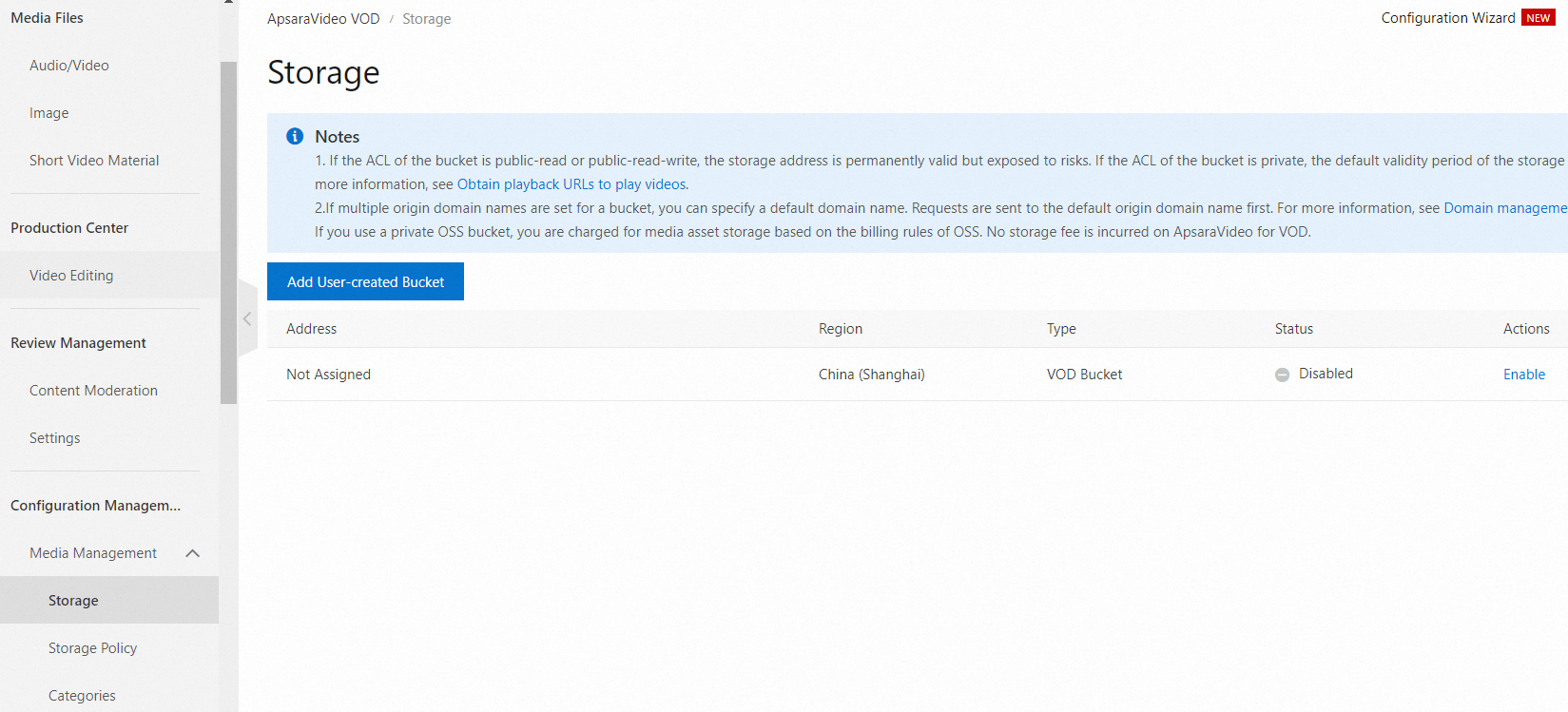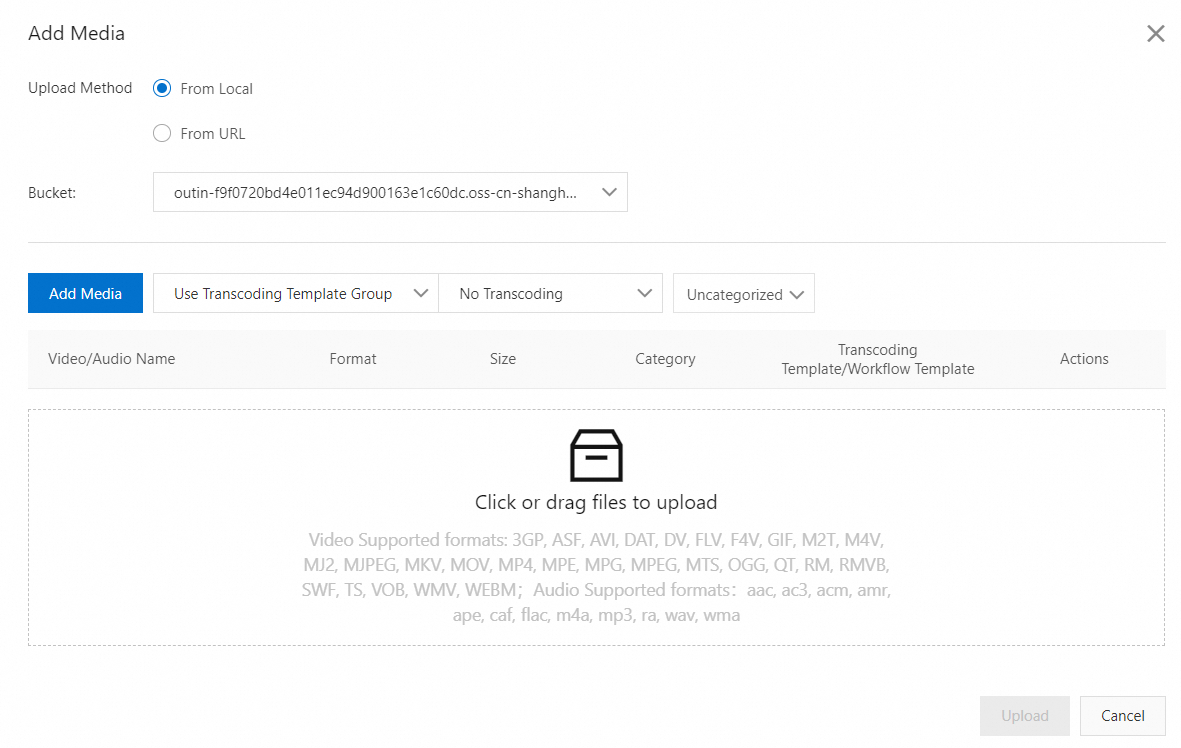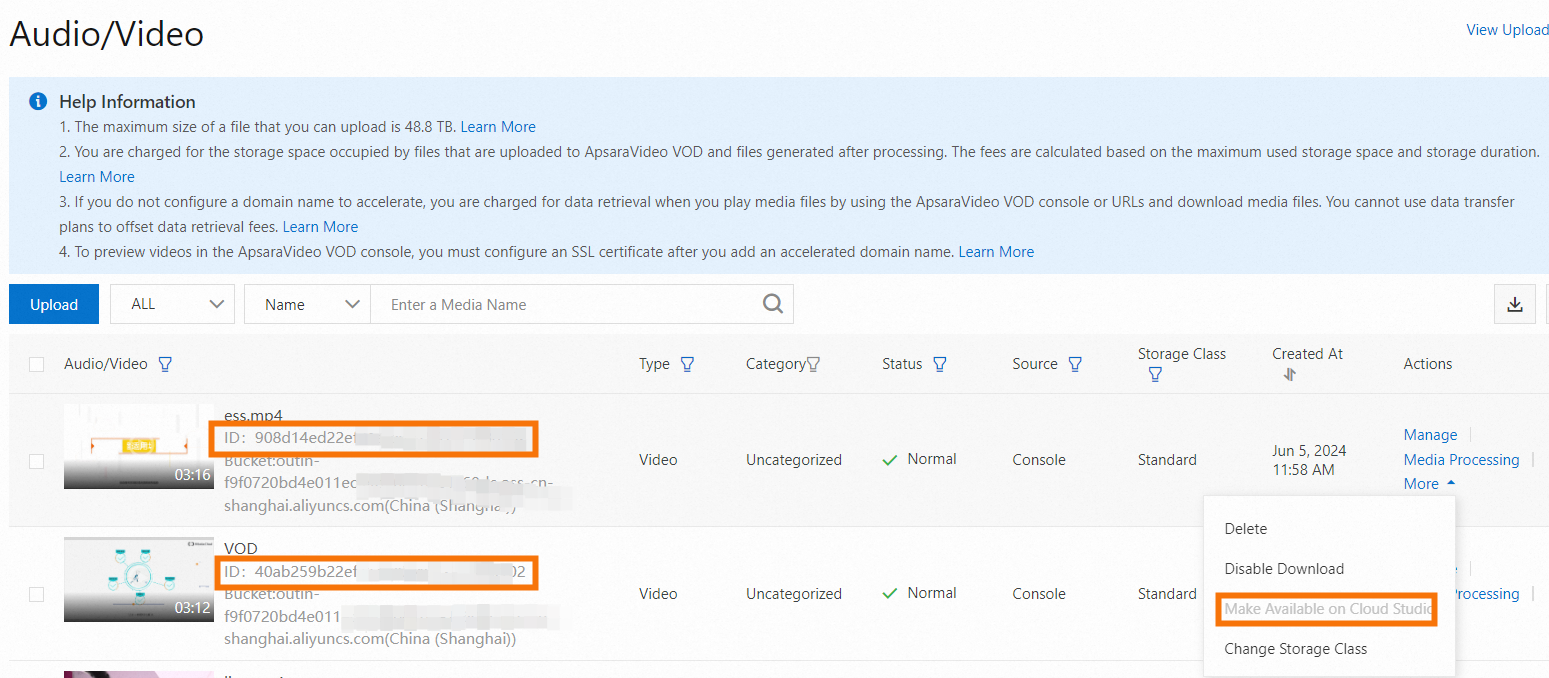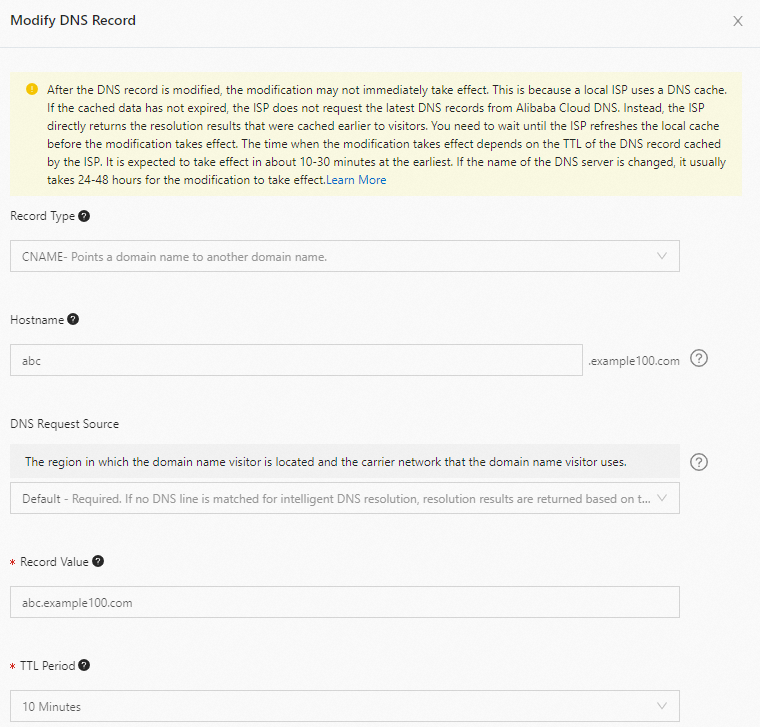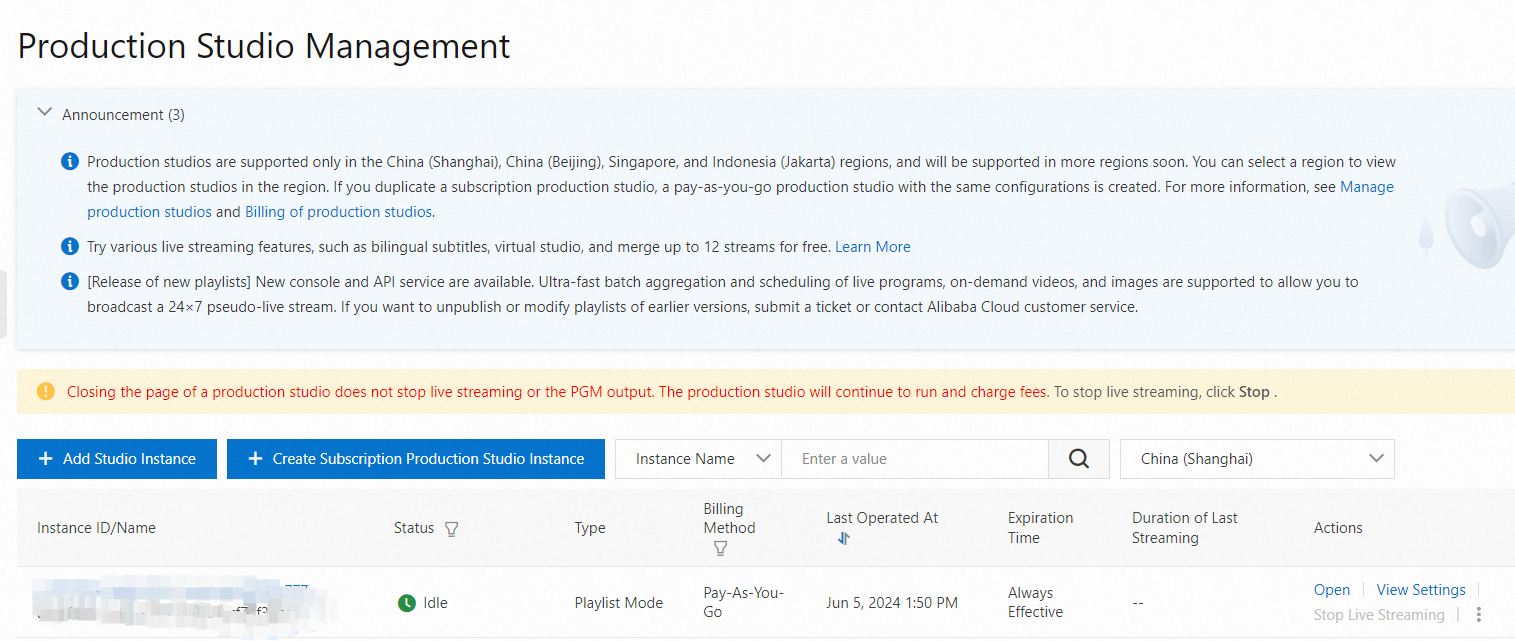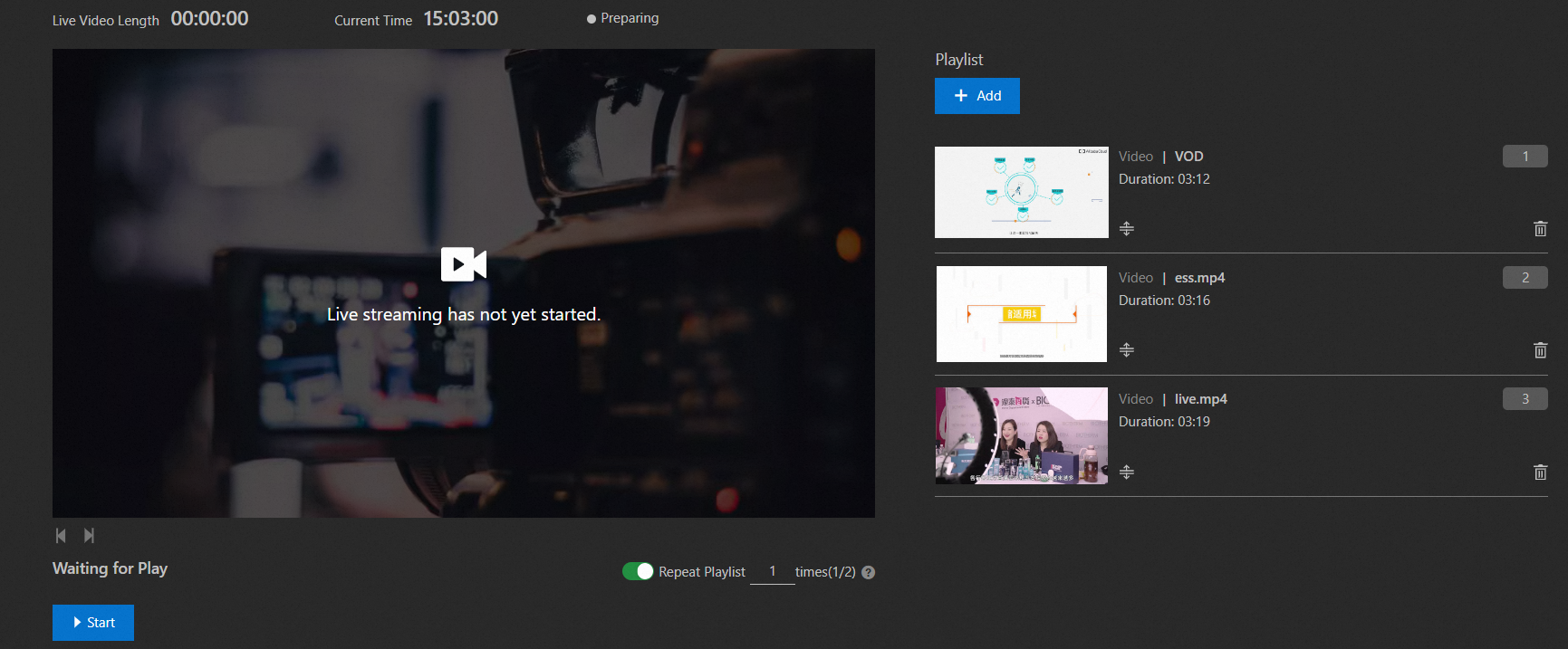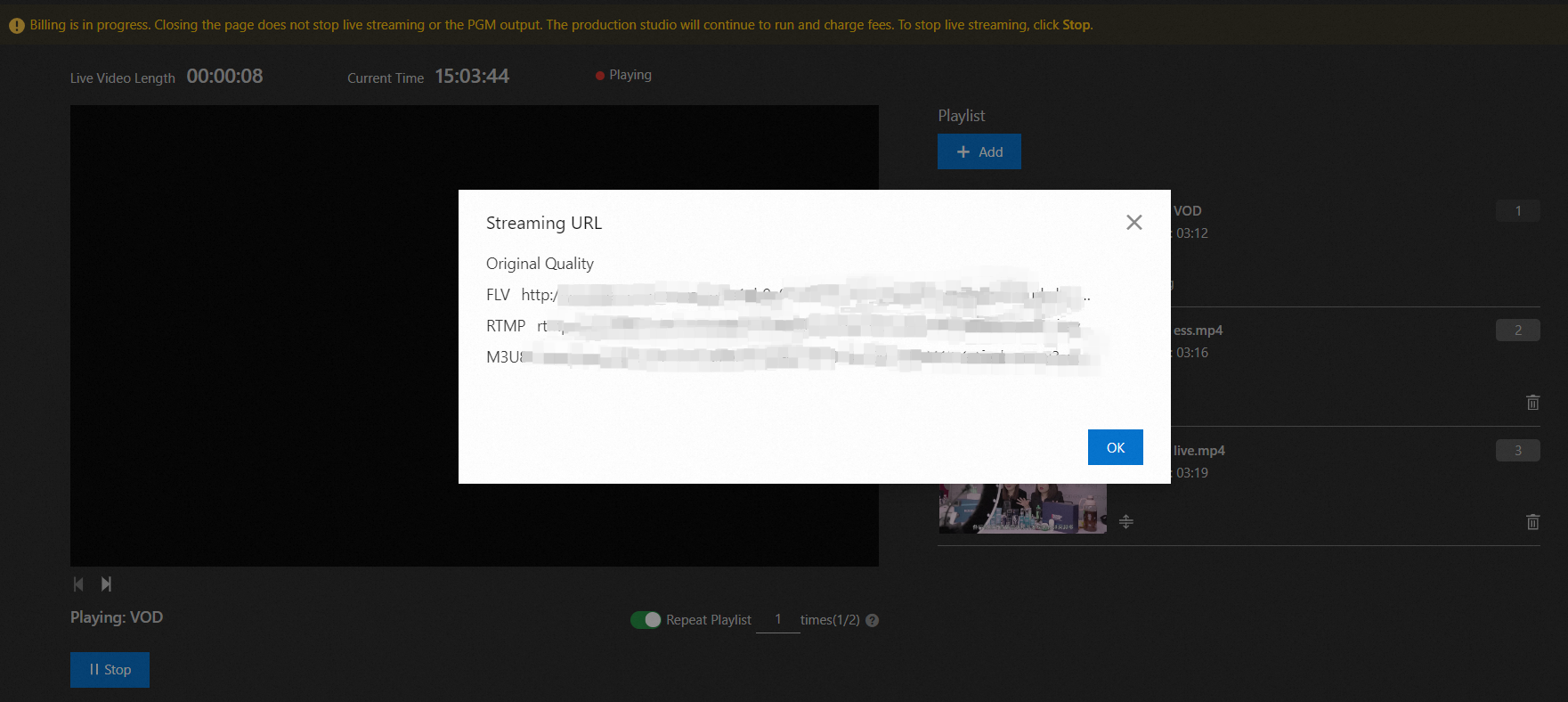Configure the following parameters and run the sample code.
package com.alibaba.aliyundebug.common;
import com.alibaba.fastjson.JSON;
import com.alibaba.fastjson.JSONArray;
import com.alibaba.fastjson.JSONObject;
import com.aliyun.live20161101.Client;
import com.aliyuncs.AcsResponse;
import com.aliyuncs.CommonRequest;
import com.aliyuncs.CommonResponse;
import com.aliyuncs.DefaultAcsClient;
import com.aliyuncs.exceptions.ClientException;
import com.aliyuncs.live.model.v20161101.*;
import com.aliyuncs.profile.DefaultProfile;
import com.aliyuncs.utils.StringUtils;
import org.apache.commons.codec.digest.DigestUtils;
import org.junit.jupiter.api.Test;
import java.util.List;
import java.util.Random;
import java.util.UUID;
public class Bodan {
private final static String ACCESS_KEY_ID = "xxxx";
private final static String ACCESS_KEY_SECRET = "xxxx";
public static DefaultAcsClient initClient(String accessKeyId, String accessKeySecret) throws ClientException {
String regionId = "cn-shanghai";
DefaultProfile profile = DefaultProfile.getProfile(regionId, accessKeyId, accessKeySecret);
DefaultAcsClient client = new DefaultAcsClient(profile);
return client;
}
private static CreateCasterResponse createCaster(DefaultAcsClient client) throws ClientException {
CreateCasterRequest request = new CreateCasterRequest();
Random random = new Random();
int i = random.nextInt(100000);
request.setCasterName("casterName" + i);
UUID uuid = UUID.randomUUID();
String token = "thisIsaToken";
String clientToken = DigestUtils.sha256Hex(token + uuid);
request.setClientToken(clientToken);
request.setNormType(6);
request.setChargeType("PostPaid");
CreateCasterResponse response = client.getAcsResponse(request);
System.out.println("The production studio is created. Response: " + JSON.toJSONString(response));
return response;
}
private static void setCasterConfig(DefaultAcsClient client, String casterId) throws ClientException {
SetCasterConfigRequest request = new SetCasterConfigRequest();
request.setCasterId(casterId);
request.setDomainName("example.aliyundoc.com");
JSONObject transcodeConfig = new JSONObject();
JSONArray liveTemplate = new JSONArray();
liveTemplate.add("lld");
transcodeConfig.put("LiveTemplate", liveTemplate);
transcodeConfig.put("CasterTemplate", "lp_sd");
request.setTranscodeConfig(transcodeConfig.toJSONString());
SetCasterConfigResponse response = client.getAcsResponse(request);
System.out.println("The production studio is configured. Request: " + response.getRequestId() + ". Response: " + JSON.toJSONString(response));
}
private static AcsResponse startCaster(DefaultAcsClient client, String casterId) throws ClientException {
StartCasterRequest startCasterRequest = new StartCasterRequest();
startCasterRequest.setCasterId(casterId);
StartCasterResponse acsResponse = client.getAcsResponse(startCasterRequest);
System.out.println("The production studio is started.");
return acsResponse;
}
private static AcsResponse stopCaster(DefaultAcsClient client, String casterId) throws ClientException {
StopCasterRequest stopCasterRequest = new StopCasterRequest();
stopCasterRequest.setCasterId(casterId);
StopCasterResponse acsResponse = client.getAcsResponse(stopCasterRequest);
System.out.println("The production studio is stopped.");
return acsResponse;
}
private static CommonResponse addShowIntoShowList(DefaultAcsClient client, String showName, String resourceId, String resourceUrl,
String resourceType, Integer spot, Integer repeatTimes,
String casterId, Long duration) throws ClientException {
CommonRequest addShowIntoShowListRequest = new CommonRequest();
addShowIntoShowListRequest.setSysDomain("live.aliyuncs.com");
addShowIntoShowListRequest.setSysVersion("2016-11-01");
addShowIntoShowListRequest.setSysAction("AddShowIntoShowList");
if (casterId == null || resourceType == null) {
return null;
}
if (resourceId == null && resourceUrl == null) {
return null;
}
addShowIntoShowListRequest.putQueryParameter("CasterId", casterId);
addShowIntoShowListRequest.putQueryParameter("ResourceType", resourceType);
if (showName != null) {
addShowIntoShowListRequest.putQueryParameter("ShowName", showName);
}
if (resourceUrl != null) {
addShowIntoShowListRequest.putQueryParameter("ResourceUrl", resourceUrl);
}
if (resourceId != null) {
addShowIntoShowListRequest.putQueryParameter("ResourceId", resourceId);
}
if (spot != null) {
addShowIntoShowListRequest.putQueryParameter("Spot", spot.toString());
}
if (repeatTimes != null) {
addShowIntoShowListRequest.putQueryParameter("RepeatTimes", repeatTimes.toString());
}
if (duration != null) {
addShowIntoShowListRequest.putQueryParameter("Duration", duration.toString());
}
CommonResponse addShowIntoShowListResponse = client.getCommonResponse(addShowIntoShowListRequest);
return addShowIntoShowListResponse;
}
private static void removeShowFromShowList(DefaultAcsClient client, String casterId, String showId) throws ClientException {
CommonRequest removeShowFromShowListFromShowList = new CommonRequest();
removeShowFromShowListFromShowList.setSysDomain("live.aliyuncs.com");
removeShowFromShowListFromShowList.setSysVersion("2016-11-01");
removeShowFromShowListFromShowList.setSysAction("RemoveShowFromShowList");
removeShowFromShowListFromShowList.putQueryParameter("ShowId", showId);
removeShowFromShowListFromShowList.putQueryParameter("CasterId", casterId);
CommonResponse removeShowFromShowListFromShowListResponse = client.getCommonResponse(removeShowFromShowListFromShowList);
System.out.println("The VOD file is deleted from the episode list. Response: " + JSON.toJSONString(removeShowFromShowListFromShowListResponse));
}
private static CommonResponse modfiyShowList(DefaultAcsClient client, String casterId, String showId, Integer repeatTimes, Integer spot,
String highPriorityShowId, String highPriorityShowStartTime) throws ClientException {
CommonRequest modfiyShowListRequest = new CommonRequest();
modfiyShowListRequest.setSysDomain("live.aliyuncs.com");
modfiyShowListRequest.setSysVersion("2016-11-01");
modfiyShowListRequest.setSysAction("ModifyShowList");
if (casterId != null) {
modfiyShowListRequest.putQueryParameter("CasterId", casterId);
}
if (showId != null) {
modfiyShowListRequest.putQueryParameter("ShowId", showId);
}
if (repeatTimes != null) {
modfiyShowListRequest.putQueryParameter("RepeatTimes", repeatTimes.toString());
}
if (spot != null) {
modfiyShowListRequest.putQueryParameter("Spot", spot.toString());
}
if (highPriorityShowId != null) {
modfiyShowListRequest.putQueryParameter("HighPriorityShowId", highPriorityShowId.toString());
}
if (highPriorityShowStartTime != null) {
modfiyShowListRequest.putQueryParameter("HighPriorityShowStartTime", highPriorityShowStartTime.toString());
}
CommonResponse modfiyShowListResponse = client.getCommonResponse(modfiyShowListRequest);
System.out.println("The episode list is modified. Response: " + JSON.toJSONString(modfiyShowListResponse));
return modfiyShowListResponse;
}
private static CommonResponse describeShowList(DefaultAcsClient client, String casterId) throws ClientException {
CommonRequest describeShowListRequest = new CommonRequest();
describeShowListRequest.setSysDomain("live.aliyuncs.com");
describeShowListRequest.setSysVersion("2016-11-01");
describeShowListRequest.setSysAction("DescribeShowList");
if (casterId != null) {
describeShowListRequest.putQueryParameter("CasterId", casterId);
}
CommonResponse describeShowListRequestResponse = client.getCommonResponse(describeShowListRequest);
System.out.println("The episode list is queried. Response: " + JSON.toJSONString(describeShowListRequestResponse));
return describeShowListRequestResponse;
}
private static void playChoosenShow(DefaultAcsClient client, String casterId, String showId) throws ClientException {
CommonRequest playChoosenShow = new CommonRequest();
playChoosenShow.setSysDomain("live.aliyuncs.com");
playChoosenShow.setSysVersion("2016-11-01");
playChoosenShow.setSysAction("playChoosenShow");
playChoosenShow.putQueryParameter("CasterId", casterId);
playChoosenShow.putQueryParameter("ShowId", showId);
CommonResponse playChoosenShowResponse = client.getCommonResponse(playChoosenShow);
System.out.println("Successfully switched to "+showId+ ".");
}
private static List<DescribeCasterStreamUrlResponse.CasterStream> describeCasterStreamUrl(DefaultAcsClient client, String casterId) throws ClientException {
DescribeCasterStreamUrlRequest describeCasterStreamUrlRequest = new DescribeCasterStreamUrlRequest();
describeCasterStreamUrlRequest.setCasterId(casterId);
DescribeCasterStreamUrlResponse acsResponse = client.getAcsResponse(describeCasterStreamUrlRequest);
List<DescribeCasterStreamUrlResponse.CasterStream> casterStreams = acsResponse.getCasterStreams();
return casterStreams;
}
public static void main(String[] args) throws ClientException {
DefaultAcsClient client = null;
try {
client = initClient(ACCESS_KEY_ID, ACCESS_KEY_SECRET);
CreateCasterResponse caster = createCaster(client);
String casterId = caster.getCasterId();
setCasterConfig(client, casterId);
String[] resourceIds = new String[]{"698d2b23581f476ea71107703e64****", "9c97e83e211a435b9f797e4e20ee****", "76c6addaa41c438985666a8a964f****"};
for (int i = 0; i < resourceIds.length; i++) {
String showName = "ShowName#" + i;
Integer repeatTimes = i;
addShowIntoShowList(client, showName, resourceIds[i], null, "vod", null, repeatTimes, casterId, null);
}
modfiyShowList(client, casterId, null, 10, null, null, null);
CommonResponse describeShowList = describeShowList(client, casterId);
String data = describeShowList.getData();
JSONObject jsonObject = JSON.parseObject(data);
JSONObject showList = jsonObject.getJSONObject("ShowList");
JSONArray shows = showList.getJSONArray("Shows");
for (int i = 0; i < shows.size(); i++) {
JSONObject show = (JSONObject) shows.get(i);
String showId = show.getString("ShowId");
String resourceType = show.getString("ResourceType");
String resourceInfo = show.getString("ResourceInfo");
Integer repeatTimes = show.getInteger("RepeatTimes");
Long duration = show.getLong("Duration");
String showInfo = String.format("show%d: showId: %s \n resourceType: %s \n resourceInfo: %s \n RepeatTimes: %d \n Duration: %d",
i + 1, showId, resourceType, resourceInfo, repeatTimes, duration);
System.out.println(showInfo);
}
startCaster(client, casterId);
Thread.sleep(500000);
stopCaster(client, casterId);
} catch (ClientException | InterruptedException e) {
e.printStackTrace();
}
}
}
 Elastic Compute Service (ECS)
Elastic Compute Service (ECS)
 Lingma
Lingma





